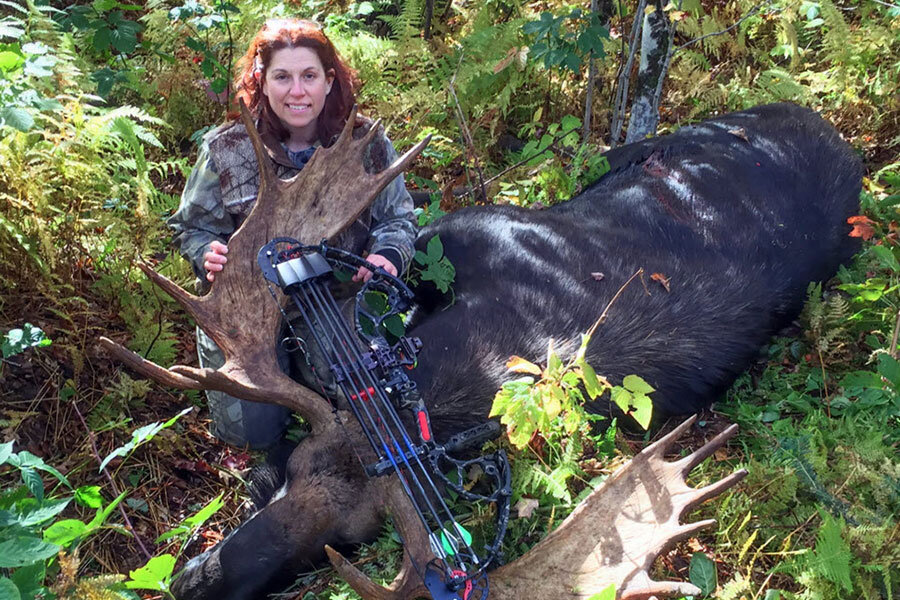The thrill of the hunt: More women are signing up for it
Loading...
| Montpelier, Vt.
More women are taking up the largely male-dominated sport of hunting to stock their freezers with local foods and as cultural influences, including movie heroines and marketers, make it more socially acceptable.
Many of the new female hunters did not grow up hunting and are joining spouses or boyfriends in the sport, researchers say. Hunting outfitters are tapping into that. Movies like "The Hunger Games," ''The Hobbit," and "Brave," which feature skilled female archers, have driven more girls and women to the sport, researchers say.
According to the most recent data from the National Survey of Fishing, Hunting, and Wildlife-Associated Recreation, the number of female hunters rose from 1.2 million in 2006 to 1.5 million in 2011, a 25 percent increase. From 2001 to 2011, the percentage of hunters who were female rose from 9 percent to 11 percent.
One of them is Tammy Miller, 46, of Fairfax, Vermont, a bow hunter who last week got a 931-pound bull moose, setting an archery record in Vermont, after scouting the area for weeks.
She got interested in hunting more than 10 years ago after divorcing and becoming a single parent trying to make ends meet. She then met the man who is now her husband, an avid hunter who taught her and bought her first bow.
"Once I started, the experience of being quiet in nature and being able to provide for my family, I was hooked," Ms. Miller said.
For fellow hunter Cheryl Frank Sullivan, 34, of Underhill, Vermont, hunting provides a sense of empowerment to be able to be self-sufficient.
Now more women are joining in the sport, and researchers say marketers are helping to lure them in.
"It's almost like the chicken-or-egg thing. There's certainly been a slight increase in female hunters. The marketing folks have grabbed onto that, they've started using images of females hunting and shooting so more and more females are doing it," said Mark Damian Duda, executive director of Virginia-based Responsive Management, which does surveys for federal and state fish and wildlife departments.
Lisa Stinson of Velpen, Indiana, got drawn in when she tried hunting about 12 years ago. The 33-year-old likes the peacefulness of being outdoors, away from everyday life. The food is another bonus.
"I like the fact that it is fresh and I know where it came from," she said. "I know that there's no added hormones."
More families also are taking their daughters, as well as sons, hunting, said Michelle Cain, a wildlife information specialist with the state Division of Fish and Wildlife in Indiana, where the number of hunting licenses sold to women rose from 17,541 in 2006 to 33,922 in 2014, a 93 percent increase.
One explanation for the growth in female hunters is economic, said Mary Zeiss Stange, a professor of women's studies and religion at Skidmore College in Saratoga Springs, New York, and author of "Woman the Hunter."
Women have more disposable income than ever before and a history of entering male-dominated areas of activity, ranging from careers to recreational and other pursuits, she said.
Another, she said, is a cultural shift.
When she and her husband would go away for a weekend of hunting in the 1990s, she'd tell students and colleagues, if asked, that she'd been camping or hiking, she said. Now some of her female students are interested in hunting.
"What we're seeing is people are coming to hunting for a variety of reasons, but certainly among women and girls, it's all the reasons that attract men, like adventure, fun, exercise, all that stuff," she said. "But I do think there is an interesting sense in which on the one hand these women and girls are conscious that they're crossing certain boundaries that a generation ago they couldn't."







